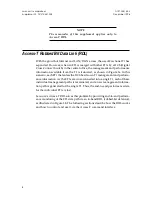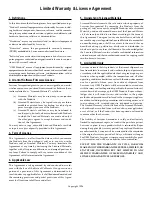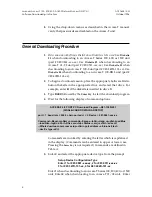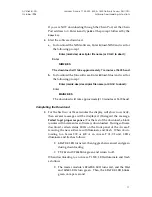
•
Unavailable Second (UAS):
For the RDL, this is a second that starts
counting after 10 consecutive SES have occurred, and stops counting
after 10 seconds in which no SES has occurred.
•
Loss of Frame Count (LOFC):
For the RDL, this is a count of the
number of times LOF has been declared for the RDL. LOF for the RDL
is declared if 2.5 seconds of continuous Out of Frame condition has
occurred, or if the RDL is in a degraded condition over an integrated
interval (as specified in AT&T Publication 54016). LOF Clear is a
continuous second the OOF condition has not occurred.
Table C summarizes the functions of all registers available via the Access-T RDL.
Table C. RDL Registers
Register Group
Function
Telco
Records performance of input from the T1 line at the local Access-T RDL. Can only
be cleared by the telco.
User
Records performance of input from the T1 line at the local Access-T RDL. Can be
cleared by the user.
Aux
Records performance of input to the Aux port from a T1 DTE at the local Access-T
RDL. Can be cleared by the user.
FDL Telco
Records performance of input from the T1 line at the remote Access-T RDL. Can be
accessed via the FDL; can only be cleared by the telco.
FDL User
Records performance of input from the T1 line at the remote Access-T RDL. Can be
accessed via the FDL; can be cleared by the user.
RDL Local
Retrieves DTE registers for the local Access-T RDL.
RDL Remote
Retrieves DTE registers for the remote Access-T RDL.
RDL Telco
Records performance of input from the T1 line at the remote Access-T RDL. Can be
accessed via the RDL; can only be cleared by the telco.
RDL User
Records performance of input from the T1 line at the remote Access-T RDL. Can be
accessed via the RDL; can be cleared by the user.
ACST-0351-S53
Larscom Incorporated
December 1996
Supplement 3, ACST-0351-005
13
















































